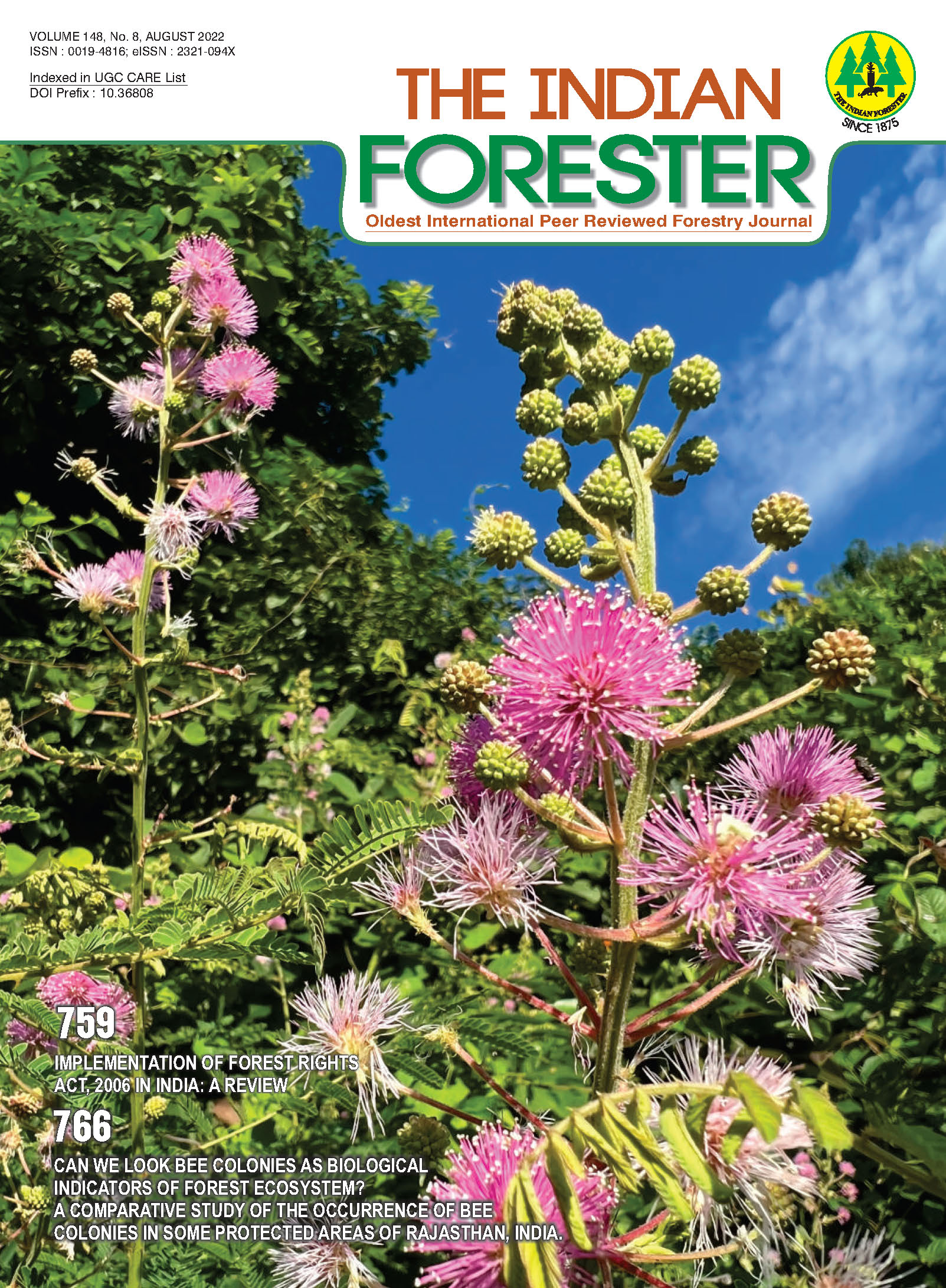Reserve Forests of Kalakad Mundanthurai Tiger Reserve in Agasthiyamalai Biosphere Reserve in Tamilnadu, India: Threats Followed by Positive Changes
DOI:
https://doi.org/10.36808/if/2022/v148i8/158296Keywords:
Eco Development, Village Forest Committee, Self-Help Group, Deforestation, Biodiversity ConservationAbstract
The survey attempts to study the state of affairs of the Reserve Forests of the Kalakad Mundanthurai Tiger Reserve (KMTR), part of Agasthyamalai Biosphere Reserve (ABR) situated in the states of Tamilnadu and Kerala in India, after the introduction of the Eco Development Project (EDP) in 1995. It also attempts to study the impact of the on-going EDP on people living in villages situated in the border areas of the KMTR Reserve Forests in terms of positive changes happening in their livelihood options and in women's socio-economic status.References
Agasthiyamala Biosphere Reserve, India. https://en.unesco.org/ biosphere/aspac/agasthyamala; last accessed Oct. 31, 2020.
Agasthiyarmalai Biosphere Reserve. ; Last accessed Oct. 30, 2020.
Chitrapu V.R. (1998). Kanyakumari District and its Natural Heritage, Zoos' Print, 13(2): 3–4.
Dutt S. (2001). Beyond 2000: A Management vision for the Kalakad Mundanthurai Tiger Reserve, Current Science, 80(3): 442–447.
Dutta K., Reddy C.S., Sharma S. and Jha C.S. (2016). Quantification and monitoring of forest cover changes in Agasthyamalai Biosphere Reserve, Western Ghats, India (1920–2012), Current Science, 110(4): 508–520.
Eco development in Kalakad Mundanthurai Tiger Reserve. http://kmtrflc.org/pdf/ecodevelopment.pdf; last accessed August 29, 2020.
Eco development in Kalakad Mundanthurai Tiger Reserve–a new paradigm towards biodiversity conservation through participatory approach. http://kmtrflc.org/pdf/ecodevelopment.pdf; last accessed August 29, 2020.
Jacob (1917). Working Plan Report of the Palode and the Veerapuli Working Circles. Travancore Government, Travancore.
Kalakad Mundandurai Tiger Reserve. Kalakad Mundandurai Tiger Conservation Foundation. http://kmtrflc.org/index.php/ about-kmtr; last accessed 18 August, 2020.
Kumar Aravind B. and Sudhakar P. (2020). Forest department road endangers core KMTR habitat: activists. The Hindu, Nov.1. Location Map of Agasthyamalai Biosphere Reserve (ABR). https://en.unesco.org/sites/default/files/agasthiyarmalai_biosp here_reserve3.pdf; last accessed 1August, 2020.
Logakanthi S.J., Rajesh Banu J. and Manoharan K. (2000). Effect of grazing on biodiversity of a semi-arid grazing land at the foothills of Western Ghats, Tamil Nadu, Journal of Environmental Biology, 21(4): 329–332.
Menon S.A. (1987). Concise political history of modern Kerala (1885-1957). Madras: S.Viswanathan Publication
Narasimhan D. and Sheeba J.I. (2017). Database on Agasthyamalai Biosphere Reserve. Report submitted to Department of Environment, Tamil Nadu. Chennai: Madras Christian College. Protection, development, maintenance and research in Biosphere Reserves in India–Guidelines and Performance. (2007). Ministry of Environment and Forests, Govt. of India,
Rawat G.S. (1988). Working Plan for the Kanyakumari Forest Division from 1988–1989 to 1997–1998. Chennai: Tamil Nadu Forest Department,
Samraj P. (1998). Impact of major reservoirs in Kanyakumari District of Tamil Nadu on the wild life, Zoos' Print, 13(2): 19–21.
Downloads
Downloads
Published
How to Cite
Issue
Section
License
Unless otherwise stated, copyright or similar rights in all materials presented on the site, including graphical images, are owned by Indian Forester.





